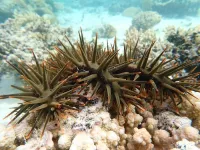“In terms of genetics and disease, I always think of Dr. Kenneth Olden’s analogy: genetics loads the gun and the environment pulls the trigger,” says Cathrine Hoyo, professor of biological sciences at NC State and co-corresponding author of the research.
“In fact, the Institute of Medicine has estimated that epigenetic response to the environment –how our genes respond to the environment – contributes between 70% to 90% of chronic disease risk. And we know that in the case of Alzheimer’s disease, only about 5% of cases are familial, or inherited.
“We also know that the risk of developing non-familial, or sporadic, Alzheimer’s differs according to race – Black people have twice the incidence of white people,” Hoyo continues. “So we wanted to see if we could identify stable epigenetic features – parts of the epigenome that are unlikely to change once established – that distinguished Alzheimer’s brains from those without the disease.”
Specifically, the research team used the imprintome – the imprint control regions (ICRs) in the human genome that regulate the expression of imprinted genes – to identify stable epigenetic features that distinguished people with Alzheimer's disease from those without.
Imprinted genes differ from other genes because only one parental copy of an imprinted gene is active. The other copy is methylated, or silenced, early in development. Additionally with these genes, the methylation marks that control their expression are susceptible to environmental influences.
“With imprinted genes, there isn’t a backup copy in the event of mutation,” says Randy Jirtle, professor of epigenetics at NC State and co-corresponding author of the research. “ICRs control the expression of these genes – in other words, they tell imprinted genes where, when and how to work through DNA methylation. And these methylation marks in ICRs don’t normally change unless altered early in development, either at conception or shortly thereafter.”
For the study, the team had brain tissue samples from 17 donors – eight normal brains and nine with Alzheimer’s. Each group was divided between non-Hispanic white and non-Hispanic Black donors (the Alzheimer’s group had five samples from Black donors and four from white donors).
The team sequenced the entire genome for each sample, then looked for ICRs in the Alzheimer’s brains that were either over- or under-methylated compared to the healthy brains.
They found 120 differently methylated ICRs in the Alzheimer’s brains. Forty were found in the combined Black and white populations; however, 81 ICRs were found only in the Black population, and 27 were found only in the white population.
The differently methylated ICRs common to both populations are associated with (MEST/MESTIT1), a paternally expressed imprinted gene, and NLRP1, a predicted imprinted gene involved in brain inflammation.
“The importance of finding the common ICRs is that it could help us develop universal tests for potential disease markers,” says Hoyo. “But it was very puzzling to discover that the Black population had almost three times as many affected ICRs as the white population.
“When you see that level of difference, and you know that the changes you’re finding are likely caused early by environmental interactions, one possible explanation is that there are unique or different stressors in that population, and those epigenetic effects are being passed along.”
The researchers hope the work could lead to testing and targeted early interventions to prevent Alzheimer's disease.
“We know that targeted prevention over long periods can alter risk,” Hoyo says. “So if you can alert people early on about their risk and apply targeted interventions, you could prevent disease onset.”
“Epigenetics is the science of hope,” Jirtle says. “You can’t necessarily reverse genetic mutations, but when you know disease risks result from changes in the epigenome you can potentially negate them.”
The work appears in Clinical Epigenetics and was supported by the National Institutes of Health under grants R01HD098857, R01MD017696, R01MD011746, P30ES025128, and R01ES032462. Brain tissue samples were provided by Duke University School of Medicine. Former NC State Ph.D. student Sebnam Cevik is first author. Other NC State contributors were David Skaar, associate research professor of biology; Antonio Planchart, associate professor of biology; and Ph.D. student Dereje Jima. Dr. Andy Liu, Dr. Truls Østbye and Dr. Heather E. Whitson of Duke University School of Medicine also contributed to the work.
-peake-
Note to editors: An abstract follows.
“DNA methylation of imprint control regions associated with Alzheimer’s disease in non-Hispanic Blacks and non-Hispanic Whites”
DOI: 10.1186/s13148-024-01672-4
Authors: Sebnem E. Cevik, David A. Skaar, Dereje D. Jima, Randy L. Jirtle, Cathrine Hoyo, Antonio Planchart, North Carolina State University; Andy J. Liu, Truls Østbye, Heather E. Whitson, Duke University
Published: April 25, 2024 in Clinical Epigenetics
Abstract:
Alzheimer’s disease (AD) prevalence is twice as high in non-Hispanic Blacks (NHBs) as in non-Hispanic Whites (NHWs). The objective of this study was to determine whether aberrant methylation at imprint control regions (ICRs) is associated with AD. Differentially methylated regions (DMRs) were bioinformatically identified from whole-genome bisulfite sequenced DNA derived from brain tissue of 9 AD (5 NHBs and 4 NHWs) and 8 controls (4 NHBs and 4 NHWs). We identified DMRs located within 120 regions defined as candidate ICRs in the human imprintome (https://genome.ucsc.edu/s/imprintome/hg38.AD.Brain_track). Eighty-one ICRs were differentially methylated in NHB-AD, and 27 ICRs were differentially methylated in NHW-AD, with two regions common to both populations that are proximal to the inflammasome gene, NLRP1, and a known imprinted gene, MEST/MESTIT1. These findings indicate that early developmental alterations in DNA methylation of regions regulating genomic imprinting may contribute to AD risk and that this epigenetic risk differs between NHBs and NHWs.
END






